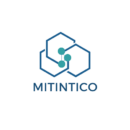”
Key Takeaways
- Integration of Technology and Lean Principles: Hi-tech lean combines advanced technologies such as automation, data analytics, and artificial intelligence with lean management principles to enhance organizational efficiency and reduce waste.
- Key Components for Success: Automation streamlines repetitive tasks; data analytics empowers decision-making with real-time insights; and AI identifies inefficiencies, fostering a culture of continuous improvement.
- Operational Advantages: Implementing hi-tech lean leads to increased efficiency, reduced cycle times, and significant cost savings through waste minimization and optimized resource allocation.
- Overcoming Challenges: Organizations may face resistance to change and integration issues, making it essential to foster a supportive culture and establish seamless collaboration between systems and teams for successful adoption.
- Case Studies Demonstrating Effectiveness: Companies like Toyota, GE, Boeing, Siemens, and Amazon showcase the tangible benefits of hi-tech lean through improved productivity, reduced lead times, and enhanced customer satisfaction.
In today’s fast-paced business landscape, organizations are constantly seeking ways to enhance efficiency and reduce waste. Hi-tech lean emerges as a powerful strategy that combines advanced technology with lean principles to streamline operations and drive productivity. By integrating cutting-edge tools like automation, data analytics, and artificial intelligence, companies can optimize their processes and create a more agile work environment.
As industries evolve, the need for innovative approaches becomes paramount. Hi-tech lean not only focuses on minimizing waste but also leverages technology to empower teams and improve decision-making. This holistic approach enables businesses to respond swiftly to market demands while maintaining high-quality standards. Embracing hi-tech lean principles can transform traditional operations into dynamic, responsive systems that thrive in a competitive landscape.
Hi-Tech Lean
 Hi-tech lean represents the integration of advanced technology within lean management principles, focusing on efficiency and waste reduction. This strategy employs tools like automation, data analytics, and artificial intelligence to streamline processes and enhance productivity.
Hi-tech lean represents the integration of advanced technology within lean management principles, focusing on efficiency and waste reduction. This strategy employs tools like automation, data analytics, and artificial intelligence to streamline processes and enhance productivity.
- Automation: Automation eliminates repetitive tasks, minimizes errors, and enhances speed, allowing employees to focus on higher-value activities.
- Data Analytics: Data analytics provides insights into operational performance, enabling informed decision-making that boosts efficiency and effectiveness.
- Artificial Intelligence: AI technologies analyze large data sets to identify inefficiencies and suggest improvements, driving continuous enhancement in workflows.
- Increased Efficiency: By incorporating technology, organizations can optimize workflows and reduce cycle times.
- Waste Reduction: Tech-driven processes help identify and eliminate waste across various stages, leading to cost savings.
- Agility: Organizations can respond swiftly to changing market demands through enhanced adaptability and real-time data.
Hi-tech lean represents a critical evolution in operational management, equipping businesses with the tools necessary to thrive in competitive environments. By merging technology and lean principles, organizations can foster a culture of continuous improvement and innovation.
Key Principles of Hi-Tech Lean
Hi-tech lean emphasizes the balance of advanced technology and lean methodologies to improve performance. This approach focuses on removing inefficiencies and enhancing overall organizational agility.
Streamlined Processes
Streamlined processes form the backbone of hi-tech lean. Organizations adopt automation to reduce time spent on repetitive tasks, thereby increasing productivity. By implementing a continuous flow of work, teams minimize delays and enhance responsiveness. Additionally, process mapping highlights inefficiencies, allowing for targeted improvements. Agile methodologies support rapid iteration and adaptation, ensuring teams efficiently tackle changing demands.
Innovative Technologies
Innovative technologies play a pivotal role in hi-tech lean. Automation tools enable the seamless integration of tasks, reducing human error and freeing up resources. Data analytics provide clear insights into operational performance, guiding decision-making with real-time metrics. Artificial intelligence enhances predictive capabilities, allowing organizations to forecast trends and adapt strategies accordingly. The strategic application of these technologies fosters an environment of continuous improvement, enabling organizations to stay ahead in competitive markets.
Benefits of Implementing Hi-Tech Lean
Implementing hi-tech lean provides organizations with significant advantages that enhance overall performance. Key benefits include enhanced efficiency and cost reduction.
Enhanced Efficiency
Enhanced efficiency stems from the integration of advanced technologies such as automation and artificial intelligence. Automation streamlines repetitive tasks, allowing employees to focus on higher-value activities. For instance, in manufacturing environments, robotic process automation accelerates production lines, reducing cycle times. Likewise, data analytics offers insights into process bottlenecks, enabling teams to make data-driven adjustments. This proactive approach results in faster turnaround times, improved workflow, and a more responsive organization.
Cost Reduction
Cost reduction arises through minimized waste and optimized resource allocation. By adopting lean principles in conjunction with cutting-edge technology, organizations can identify inefficiencies and eliminate non-value-adding processes. Automated inventory management systems can reduce excess stock and storage costs. Additionally, predictive analytics contributes by forecasting demand and aligning production levels accordingly, thus minimizing overproduction and related expenses. The combined effect of these strategies significantly decreases operational costs, enhancing profitability and sustainability.
Challenges in Adopting Hi-Tech Lean
 Hi-tech lean adoption presents various challenges that organizations must navigate to fully realize the benefits. These obstacles can impede progress and hinder the successful implementation of hi-tech lean practices.
Hi-tech lean adoption presents various challenges that organizations must navigate to fully realize the benefits. These obstacles can impede progress and hinder the successful implementation of hi-tech lean practices.
Resistance to change constitutes a significant barrier in adopting hi-tech lean. Employees may exhibit reluctance due to fear of job loss, unfamiliarity with new technologies, or skepticism about the initiatives’ effectiveness. These concerns can lead to decreased morale and productivity. To address this resistance, organizations must foster a supportive culture that encourages open communication, offers training, and highlights the benefits of hi-tech lean practices. Engaging staff in the transition process and demonstrating how these changes enhance their roles can ease apprehension and promote a collaborative atmosphere.
Integration Issues
Integration issues frequently arise during the implementation of hi-tech lean practices. The simultaneous application of advanced technologies and lean methodologies necessitates seamless collaboration between various systems and teams. Challenges can include incompatibility between software solutions, data silos, and a lack of standardized processes. Organizations must prioritize system compatibility, invest in user-friendly technologies, and establish clear protocols for data sharing and communication. Additionally, a comprehensive integration strategy that aligns organizational goals with technological capabilities can enhance the likelihood of successful adoption and overall effectiveness of hi-tech lean initiatives.
Case Studies of Hi-Tech Lean Success
Many organizations demonstrate successful implementations of hi-tech lean principles, showcasing the benefits of merging advanced technology with lean practices.
Case Study 1: Toyota Motor Corporation
Toyota adopted automation and data analytics in its production lines to enhance efficiency and maintain high-quality standards. By implementing robotics in manufacturing processes, Toyota achieved a substantial reduction in production time. Automation resolved repetitive tasks, allowing employees to focus on value-added activities.
Case Study 2: General Electric (GE)
General Electric integrated artificial intelligence and predictive analytics into its manufacturing operations. By analyzing production data, GE identified inefficiencies, enabling targeted improvements. This approach resulted in a 20% increase in operational productivity and a notable decrease in waste, aligning production with market demand.
Case Study 3: Boeing
Boeing utilized process mapping and automation tools to streamline its assembly process. The implementation revealed bottlenecks that previously impacted delivery timelines. By automating complex tasks, Boeing improved its production speed by 25%, enhancing overall workflow and agility.
Case Study 4: Siemens
Siemens adopted a hi-tech lean approach in its engineering projects, incorporating advanced modeling software. This integration allowed for real-time adjustments based on data analytics. Siemens reported a 30% reduction in project lead times, leading to improved customer satisfaction and reduced costs.
Case Study 5: Amazon
Amazon established a data-driven culture, leveraging analytics to streamline logistics and inventory management. By using automated systems to track orders, Amazon reduced delivery times significantly. The integration of predictive analytics also minimized overstock situations, aligning inventory levels with actual demand.
These case studies highlight the diverse applications of hi-tech lean across various industries, demonstrating effective strategies for increasing efficiency, minimizing waste, and fostering adaptability in competitive markets.
Embracing hi-tech lean is crucial for organizations aiming to thrive in today’s fast-paced environment. By effectively integrating advanced technologies with lean methodologies, businesses can streamline operations and enhance productivity. This approach not only minimizes waste but also empowers teams to focus on high-value tasks.
As companies navigate the challenges of resistance to change and integration, fostering a culture of continuous improvement becomes essential. Organizations that prioritize training and open communication will find themselves better equipped to adapt to technological advancements.
Ultimately, the successful implementation of hi-tech lean principles can lead to significant gains in efficiency and profitability, positioning businesses for long-term success in a competitive landscape.

